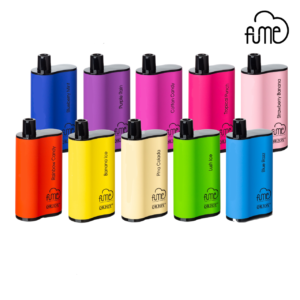In a significant victory for public health, the year 2023 has seen yet another remarkable decrease in youth vaping rates, further solidifying the downward trend that began after the peak in 2019. According to the latest data, youth vaping is down by a staggering 61.5%, highlighting the effectiveness of various prevention and regulatory measures. In this blog post, we’ll explore the reasons behind this decline, the key strategies that contributed to it, and the continued efforts required to protect our youth from the harms of vaping.
Understanding the 61.5% Decline
The 61.5% decline in youth vaping since the peak in 2019 represents a significant milestone in the battle against this public health issue. To comprehend this decline, it’s essential to consider the various contributing factors:
- Regulatory Measures: One of the primary drivers of the decline is the implementation of strict regulations on the sale and marketing of vaping products. These regulations have made it more difficult for underage individuals to access e-cigarettes and vaping devices.
- Public Awareness Campaigns: Extensive public awareness campaigns have been conducted to educate youth about the dangers of vaping. These campaigns have empowered young people with knowledge about the health risks associated with vaping, helping them make informed decisions.
- School and Community Initiatives: Schools and communities have played a crucial role in curbing youth vaping. They have implemented anti-vaping programs and support systems, creating an environment that discourages vaping among young individuals.
- Parental Involvement: Parents have also become more involved in preventing their children from vaping. Open discussions, parental guidance, and support have played a significant role in reducing the appeal of vaping to young people.
The Road Ahead – Sustaining the Decline
While the 61.5% decline is a remarkable achievement, the battle against youth vaping is far from over. Sustaining and furthering this decline will require continued efforts from all stakeholders, including:
- Stricter Enforcement: The enforcement of regulations on the sale and marketing of vaping products must remain robust. Retailers who sell to minors must face severe consequences, and online sales to underage individuals should be curtailed.
- Comprehensive Education: Education remains a cornerstone in the fight against youth vaping. Schools, parents, and communities should continue educating young people about the dangers of vaping, emphasizing the long-term health risks.
- Supportive Communities: Creating supportive environments where vaping is discouraged is essential. Community initiatives, counseling services, and peer support programs can help young people resist the temptation to vape.
- Research and Innovation: Ongoing research into the evolving landscape of vaping is crucial. This will help identify new challenges and solutions, ensuring that our efforts remain effective in the face of changing trends.
Conclusion
The 61.5% decline in youth vaping since the 2019 peak is a reason for optimism, demonstrating that proactive measures are working to protect the health of our youth. However, we must remain vigilant and continue our collective efforts to ensure that this decline is not short-lived. With sustained commitment to regulation, education, and support, we can create a brighter, healthier future for the next generation, free from the harms of youth vaping.



